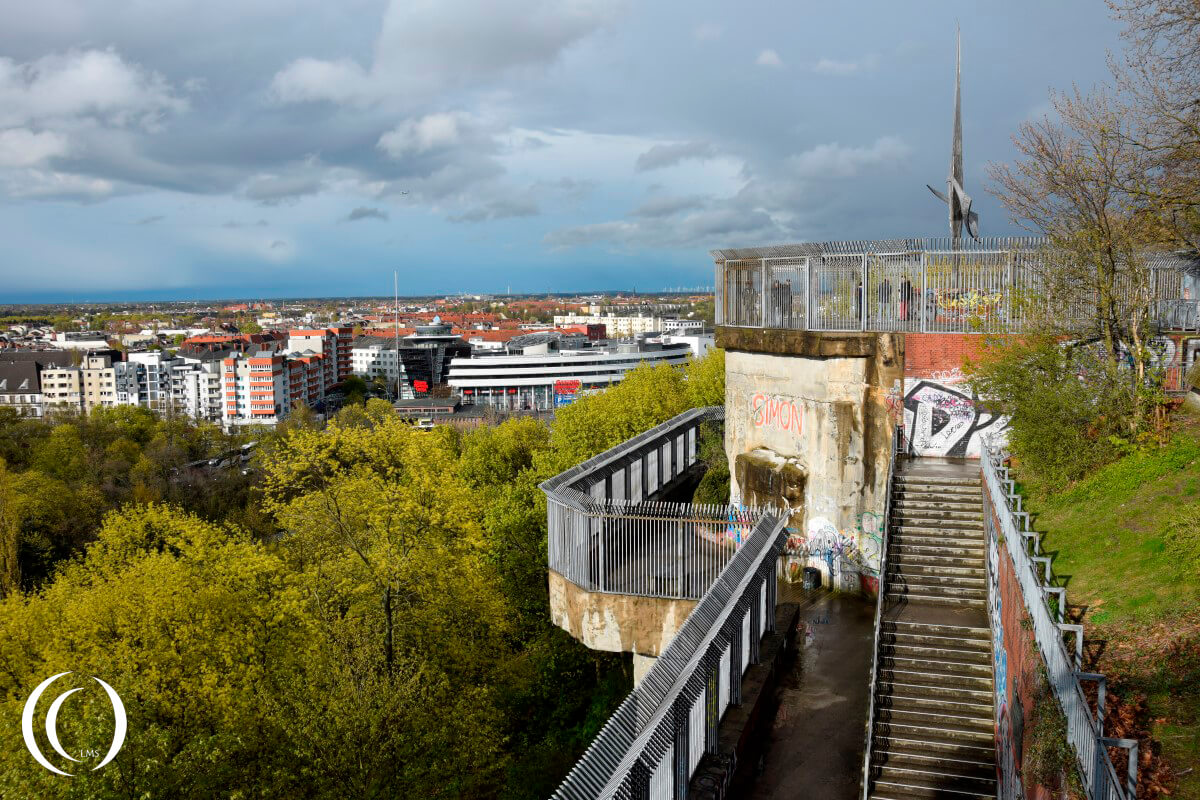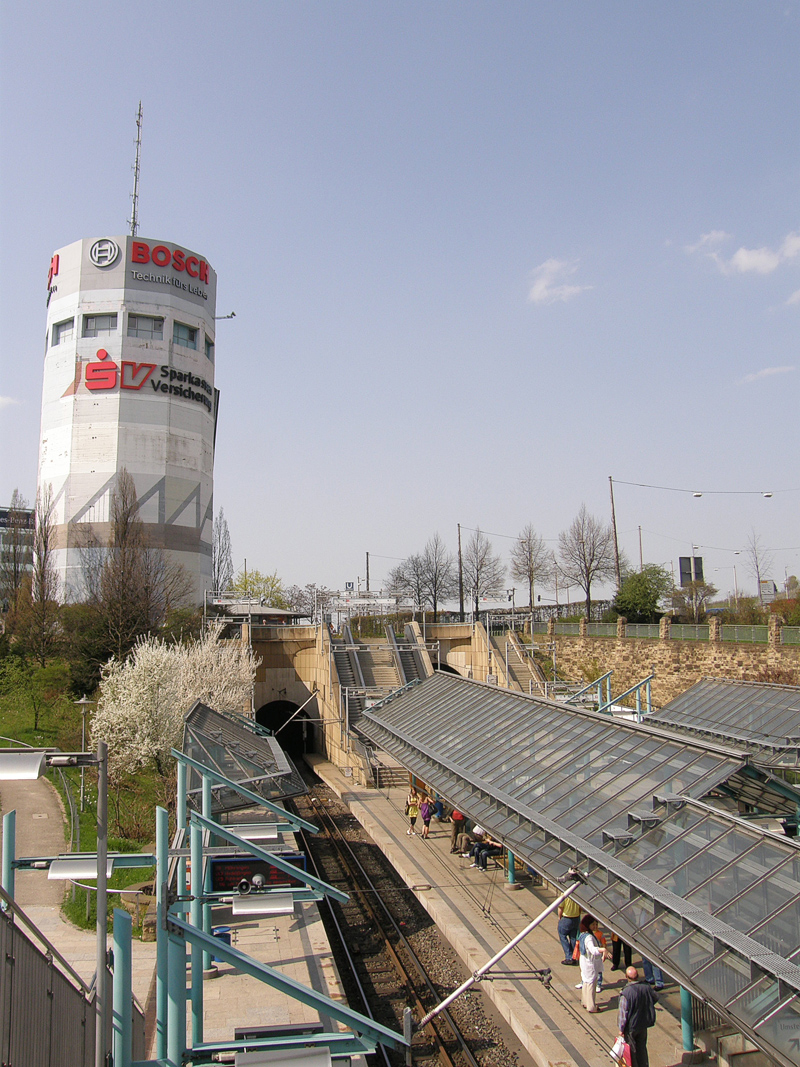Berlin Anti Aircraft Towers - Anti-aircraft towers (German: Flaktürme) were large overhead anti-aircraft gun turrets built by Nazi Germany. Since 1940, there have been 8 anti-inflammatory complexes in the cities of Berlin (three), Hamburg (two) and Vienna (three). Other cities that used battle towers were Stuttgart and Frankfurt. Smaller single-purpose battle towers were built at key outlying German strongholds, such as Angers in France and Heligoland in Germany.
The towers were operated by the Luftwaffe to defend against Allied strategic air raids on these cities during World War II. They also served as air raid shelters for thousands of local civilians.
Berlin Anti Aircraft Towers

After the RAF attack on Berlin in 1940, Adolf Hitler ordered the construction of three massive anti-aircraft towers to defend the capital from air raids. Each tower had a radar installation with a radar panel that could be retracted behind a thick concrete and steel dome for protection.
Berlin, Germany, Humboldthain Flak Tower, Nazi Anti Aircraft Tower From World War Ii In Humboldthain Park, Gesundbrunnen District Stock Photo
Hitler was interested in the design of the towers and even made some sketches. They were built in six months. The priority of the project was such that the German national railway line was altered to facilitate the transport of concrete, steel and timber to the construction site.
With concrete walls up to 3.5 m (11 ft) thick, their designers considered the towers to be invulnerable to attack from the standard ordnance carried by RAF heavy bombers during their construction.
The turrets could sustain a rate of fire of 8,000 rounds per minute from their multi-level guns (although mostly smaller caliber shells such as the 2cm FlaK 30), with a range of up to 14 km (8.7 mi). ) in a 360-degree field of fire. However, only the 128 mm (5.0 in) FlaK 40 guns had an effective range to defend against RAF and USAAF heavy bombers. The three towers around the outskirts of Berlin created a triangle of anti-aircraft fire that covered the center of Berlin.
The bullet holes were also designed with the idea of using the above-ground bunkers as a civilian shelter, with space for 10,000 civilians and a hospital ward inside. During the Battle of Berlin, residents formed their own communities, with up to 30,000 Berliners taking refuge in a single tower during the battle. These towers, like the fortifications of medieval castles, were some of the most secure places in a contested city and therefore the battle towers were some of the last places to surrender to the Red Army, in fact they were forced to surrender when supplies ran low.
Flak Tower I Berlin Zoo G Tower Model Ship Kit
In the attack on Berlin, the Soviets found it difficult to inflict significant damage on anti-bomber towers, even with some of the largest Soviet guns, such as the 203 mm M1931 howitzers.
After the war, demolition of the towers was often considered unsustainable and many remain to this day, with some being converted for alternative uses.
The G turrets were 70.5 m (231 ft) square and 39 m (128 ft) high, usually armed with eight (quad two) 12.8 cm FlaK 40 and numerous 37 mm Flak and 32 (eight quad) 20 mm Flakvierling guns. The L turrets were 50 m × 23 m × 39 m (164 ft × 75 ft × 128 ft), usually armed with four quadruple 20 mm guns.

The G-turrets were 57 m × 57 m × 41.6 m (187 ft × 187 ft × 136 ft), normally armed with eight (four twin) 128 mm guns and six (four quad) 20 mm guns. The L turrets were 50 m × 23 m × 44 m (164 ft × 75 ft × 144 ft), usually armed with forty (t quad) 20 mm guns.
Flakturm Wien: Luftwaffe Anti Aircraft Towers In Vienna
The G-turrets were 43 m × 43 m × 54 m (141 ft × 141 ft × 177 ft), usually armed with eight (four twin) 128 mm guns and thirty-two (eight quad) 20 mm guns.
The assessment of the ever-growing Battery Towers was commissioned by Adolf Hitler. They would be three times the size and firepower of the anti-holes.
The tower built near the Berlin Zoo was of the first generation type and covered the government district. It was also used as storage for artifacts from the Berlin Museum. The inhabitants surrendered to the Soviets on April 30, 1945. In 1947, the British blew up the G-tower with several tons of explosives in a second attempt. The L tower was first demolished in July.
Both towers were covered and now look like natural hills in Volkspark Friedrichshain. The G Tower, known as Mont Klamot (Ruble Mountain) in Berlin, was the inspiration for songs by the singer-songwriter Wolf Biermann and the rock group Silly.
Augarten Flak Tower Hi Res Stock Photography And Images
The third of the first generation battle towers was built in Humboldthain. Tower G was partially demolished after the war; one side remains visible. The interior can be visited.
52°32'50 "N 13°23'06" E / 52.547238° N 13.384961° E / 52.547238; 13.384961. The L tower was partially demolished after the war; some walls remain visible.
That tower, which has six levels below the roof, in its design, as part of its air shelter, includes two identical gas attack protection spaces, one on the first floor (above ground level) and the other on the second floor. . Both in Tower 1, the area is about 300 m2. (3,230 sq. ft.) area, and has six windows (pins in the wall).

53°33'10"N 9°58'02"E / 53.55285°N 9.967314°E / 53.55285; 9.967314. The G tower has been converted into a nightclub with a music school and music stores. In 2019, NH Hotel Group announced plans to convert it into a luxury hotel with a forest on it, with construction in 2021 and opening in 2022. After the reconstruction, the height should have increased to 58 meters with several more floors. There must have been thirteen steps.
World War 2 History: German Flak Towers—indestructible Air Defense Castles
53°30'36"N 9°59'24"E / 53.51006°N 9.98993°E / 53.51006; 9.98993, the L tower was demolished after the war. Although its ideology has recently shown signs of resurgence, the physical traces of German Nazism have all but disappeared from view. However, notable exceptions can be found in the odd sprinkling of brutalist towers that still tower over neighborhoods in Berlin, Hamburg and Vienna. These concrete monoliths were so well made that tearing them down was more trouble than it was worth. As a result, most remain empty and unused - mute reminders of a time when militant pragmatism took precedence over architectural heritage.
Anti-aircraft towers were built during World War II as emplacements for Luftwaffe anti-aircraft artillery. To this end, they were effective in protecting cities from Allied bombers. Meanwhile, their impenetrable concrete interiors doubled as air raid shelters for thousands of German civilians.
Or "guidance" L-tower for fire control and command. Together, the two outposts could effectively communicate during battle and coordinate with other defense complexes in the area. Like besieged medieval castles, loopholes also proved effective in consolidating some of the last Nazi garrisons that resisted the Red Army when it captured Berlin in 1945. Later, the holders ran out of supplies and surrendered.
When Hitler ordered the construction of Berlin's initial Blight Towers in 1940, he sped up the process by adjusting the schedules of the national railways around the delivery of building materials. The towers were built in just six months. After the war, most of the smaller L-towers were demolished or buried. Seventy years later, the remaining battle towers are slowly being converted for other uses. The tower in Vienna's Esterhazy Park, for example, contains a public aquarium and a climbing wall. Hamburg's Heiligengeistfeld G tower is now a complex of nightclubs and commercial establishments, with plans to crown it with an elaborately landscaped public garden.
Takom 1/350 Scale Flak Tower I Berliner Zoo G Tower
Vienna's Augarten L-tower today (left) and with the radar antenna after completion in 1944 (Corbis via Getty Images)
(left) Battle tower seen from above. | (center) Berlin Zoo G-tower rampart during World War II. | (right) Aerial photograph of Hamburg's bomb tower after it surrendered to the British in May 1945. (Wikimedia)
The Haus des Meeres aquarium (left) is now located in Vienna's main nave. | The same tower was abandoned after the war in 1945. (Corbis via Getty Images) Flak towers were built by Nazi Germany after Adolf Hitler was angered by the attack on the capital Berlin. Adolfo developed an interest by making some sketches of possible anti-flaking structures and even ordered a change in the railway line to allow timber, steel and concrete to be transported to the site. In an attempt to prevent an attack on large cities, several bomb towers were built in Vienna, Hamburg and Berlin. They consist of concrete towers above the ground that prevented aerial bombardment. In other cities important to the Germans, smaller anti-aircraft towers were also built.

Flak towers were built mainly for two purposes. First, they contained cannons that could enable the Germans to fight their enemy's aircraft from the ground. It also served as a place to store valuable materials preserved in times of attack. The battle towers were always in abundance of water, air and electricity so that people would have their basic needs in the event of an attack.
The Battle Of Berlin: April 20th 1945
Each flak tower consisted of two units; one large tower, called the G-tower, and a slightly smaller tower, the L-tower. Tower G (Gefechts-Turm) served as a warehouse for weapons used in anti-aircraft defense. The L Tower (Leit-Turm) was used as a command center, a fire control center and a place where people could run to safety in the event of an attack. It also housed hospitals and military quarters.
Hamburg had two Flak towers, both
Schools for aircraft mechanics, highest paid aircraft mechanics, bend mechanics, aircraft mechanics handbook, gifts for aircraft mechanics, aircraft mechanics training, types of aircraft mechanics, aircraft mechanics creed, aircraft mechanics job, tools for aircraft mechanics, aircraft mechanics salary, colleges for aircraft mechanics
0 Comments